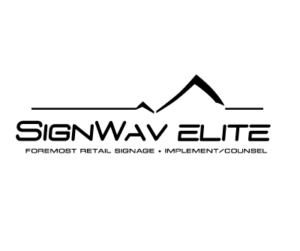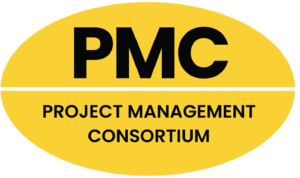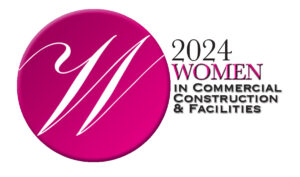Navigating the New Era of Construction Through Technological Innovations
This comprehensive article delves into the transformative world of workforce management in the construction industry. Highlighting the impact of automation and digital tools, it explores how these advancements are revolutionizing productivity and compliance, reshaping the way construction projects are managed and executed.
The construction industry, traditionally perceived as a sector slow to embrace change, is standing on the brink of a technological revolution. The advent of automation and a suite of digital tools is not just an emerging trend but a fundamental shift in how construction workforce management operates. This article aims to unravel the layers of this transformation, examining how automation, alongside innovative digital tools, is enhancing productivity, ensuring compliance, and reshaping the workforce landscape in the construction sector.
In the ensuing sections, we’ll explore the various dimensions of this revolution: from the integration of automation in daily construction activities to the role of advanced digital tools in workforce management. We’ll also discuss the implications of these changes for productivity and compliance, offering insights into how companies can leverage these technologies for optimal benefits.
Automation in Construction – More Than Just Robots
Automation in the construction industry is rapidly evolving, moving beyond the stereotypical image of robots and drones to encompass a diverse range of technologies that are reshaping the sector.
Automation in the construction industry is no longer a futuristic concept but a present reality. Companies are increasingly adopting advanced technologies like drones, AI-driven machinery, and Geofencing for Construction and Home Builders to enhance site management and security. These tools not only streamline operations but also ensure projects are completed on time and within budget.
1.1. Automated Machinery and Equipment:
Construction sites are increasingly adopting automated machinery to perform repetitive and labor-intensive tasks. This includes the use of self-driving heavy equipment for tasks like excavation and material transportation, which not only speeds up the construction process but also enhances safety by reducing the risk of accidents. These machines are often equipped with sensors and GPS technology, allowing for precision work that minimizes errors and material wastage.
1.2. AI-Driven Project Management Tools:
Artificial Intelligence (AI) plays a pivotal role in project management within construction. AI-driven tools can predict project timelines, allocate resources efficiently, and identify potential bottlenecks before they become critical issues. This predictive capability is invaluable in a sector where delays can be costly. For instance, AI can analyze weather patterns to recommend optimal work schedules or assess project data to suggest cost-saving measures.
1.3. Integration of Paystubs Generator and Financial Management Systems:
The integration of paystubs generator systems in construction workforce management is a notable example of administrative automation. These systems automate the generation of accurate and compliant paystubs, reducing the administrative burden and potential for error. This is particularly beneficial in construction, where workforce arrangements can be complex due to varying pay scales, contract types, and compliance requirements. By automating this aspect, companies ensure accuracy in financial management, contributing to overall efficiency and regulatory compliance.
1.4. Enhanced Communication and Collaboration:
Automation also extends to communication and collaboration tools. The use of project management software that integrates various aspects of a construction project—from design to execution—enables seamless communication among teams. These tools often include features like real-time updates, cloud-based document sharing, and collaborative planning interfaces, ensuring that all stakeholders are on the same page, regardless of their physical location.
1.5. Compliance and Regulatory Adherence:
Automated systems are increasingly used to ensure compliance with industry regulations. For example, software that tracks worker certifications and safety training helps manage compliance requirements efficiently. Additionally, tools that automatically update based on changes in legislation or industry standards keep companies ahead of compliance issues, reducing the risk of costly penalties.
1.6. Sustainability and Green Construction:
Finally, automation plays a critical role in promoting sustainability in construction. Automated systems can optimize resource use, reduce waste, and support the implementation of green construction practices. For instance, automated energy management systems in construction equipment can reduce fuel consumption, thereby minimizing the environmental footprint of construction activities.
In summary, automation in construction is multifaceted, impacting various aspects from operational efficiency to regulatory compliance and sustainability. The next section will focus on the digital tools revolutionizing workforce management in construction.
Digital Tools Revolutionizing Workforce Management in Construction
The integration of digital tools in construction workforce management is not just a trend but a strategic transformation that is reshaping how projects are planned, executed, and monitored. These tools are pivotal in enhancing productivity, ensuring accuracy, and fostering a culture of transparency and accountability.
2.1. Workforce Planning and Scheduling Tools:
Digital tools for workforce planning and scheduling have revolutionized the way construction projects are staffed and managed. These tools allow for the efficient allocation of human resources, matching skill sets with project needs, and optimizing labor costs. Advanced scheduling software can accommodate changes in real-time, adapting to delays or accelerations in project timelines. This adaptability is crucial in an industry where schedules are often subject to external variables like weather or supply chain disruptions.
2.2. Time Tracking and Payroll Integration:
Time tracking technologies integrated with payroll systems, including paystubs generator software, have streamlined the payroll process in construction. These systems accurately track hours worked, including overtime and different pay rates for various tasks or roles. The integration of time tracking with paystubs generator tools ensures that pay is calculated accurately and efficiently, reducing administrative burdens and enhancing worker satisfaction through timely and correct compensation.
2.3. Mobile Technology and On-Site Applications:
The use of mobile technology and on-site applications has brought real-time data and communication to the forefront of construction management. Mobile apps allow workers and managers to report progress, access plans and documents, and communicate issues directly from the field. This instant access to information speeds up decision-making, reduces errors, and enhances collaboration among teams.
2.4. Training and Skill Development Platforms:
Digital platforms for training and skill development are becoming increasingly important in the construction industry. These tools provide workers with access to training modules, safety protocols, and certification programs, often through mobile devices. This accessibility not only helps in maintaining compliance with industry standards but also empowers the workforce by facilitating continuous learning and skill enhancement.
2.5. Data Analytics and Reporting:
Construction projects generate vast amounts of data, and digital tools for data analytics and reporting enable companies to harness this information effectively. These tools provide insights into productivity trends, cost overruns, and areas for improvement. By analyzing historical and real-time data, managers can make informed decisions, foresee potential issues, and implement proactive measures to mitigate risks.
2.6. Enhanced Collaboration with Cloud-Based Solutions:
Cloud-based solutions have fostered a new level of collaboration in construction workforce management. These platforms allow for the centralization of project documents, plans, and communication, accessible by all stakeholders from any location. This centralized approach ensures consistency in information, reduces duplication of efforts, and streamlines project management processes.
The integration of these digital tools in construction workforce management is not just enhancing operational efficiency; it’s fundamentally changing the way projects are managed, promoting a more agile, informed, and collaborative approach. In the next section, we’ll explore the implications of these technologies on productivity and compliance in the construction industry.
Implications of Automation and Digital Tools on Productivity and Compliance in Construction
The incorporation of automation and digital tools in construction workforce management has far-reaching implications for productivity and compliance. This section delves into how these technologies are not just tools for efficiency, but catalysts for a comprehensive transformation in the construction sector.
3.1. Boosting Productivity with Smart Technology:
One of the most significant impacts of automation and digital tools is the substantial increase in productivity. Automated machinery and AI-driven management systems streamline workflows, reduce manual labor, and minimize errors, leading to faster project completion rates. The use of these technologies in planning and execution ensures that projects adhere to timelines, resources are utilized optimally, and workforce productivity is maximized.
3.2. Ensuring Accuracy and Reducing Errors:
Accuracy is critical in construction, where errors can lead to costly delays and safety hazards. Automation in tasks like measurement, material cutting, and site surveying significantly reduces the margin for error. Digital tools for project management and design, such as Building Information Modeling (BIM), provide a high level of precision, ensuring that projects are executed as planned.
3.3. Streamlining Compliance and Regulatory Adherence:
Compliance with industry standards and regulations is a major concern in construction. Digital tools streamline this aspect by maintaining up-to-date records of compliance-related documents, worker certifications, and safety protocols. Automated reporting tools streamline financial management and regulatory compliance. Paystub generator systems are particularly valuable, offering sample templates that ensure adherence to financial regulations and labor laws, simplifying payroll management and enhancing transparency in employee compensation.
3.4. Enhanced Resource Management and Waste Reduction:
Automation and digital tools aid in effective resource management, leading to reduced waste. By optimizing material usage and improving inventory management through automated systems, construction projects can minimize waste and control costs. Additionally, these tools provide insights into sustainable practices, supporting the industry’s shift towards green construction.
3.5. Improved Safety Standards and Risk Management:
Safety is paramount in construction, and technology plays a crucial role in enhancing safety standards. Automated equipment reduces the need for workers to perform hazardous tasks, while AI and analytics tools help in identifying potential safety risks before they materialize. Digital training platforms ensure that workers are up-to-date with the latest safety protocols, further reducing the risk of accidents.
3.6. Facilitating Remote Monitoring and Management:
In today’s interconnected world, the ability to remotely monitor and manage construction sites is a game-changer. Digital tools enable managers to keep track of progress, address issues, and make decisions without being physically present on-site. This not only saves time but also enhances the flexibility and responsiveness of management.
The integration of automation and digital tools in construction workforce management is revolutionizing the way projects are approached, executed, and completed. The next section will provide insights into how companies can leverage these technologies for optimal benefits.
Leveraging Technology for Optimal Benefits in Construction Workforce Management
The final section of our exploration into the future of construction workforce management focuses on how companies can effectively leverage technology to reap maximum benefits. This involves not just adopting new tools but also fostering a culture that embraces change and innovation.
4.1. Strategic Implementation of Technology:
The key to successful technology integration lies in a strategic approach. Companies need to assess their specific needs, challenges, and objectives to determine which technologies will be most beneficial. This might involve a combination of automation tools, digital workforce management systems, and advanced analytical tools. A phased implementation plan that allows for testing, feedback, and adjustments can be more effective than a wholesale overhaul.
4.2. Training and Skill Development:
To fully capitalize on new technologies, it’s crucial to invest in training and skill development. Workers and managers need to be proficient in using new tools, from automated equipment to software for project management and paystubs generation. Ongoing training programs, workshops, and e-learning modules can help in building a tech-savvy workforce that is adaptable to changing technological landscapes.
4.3. Fostering a Culture of Innovation:
Adopting new technologies is as much about cultural change as it is about technical upgrades. Companies need to foster a culture that values innovation, encourages experimentation, and is open to new ways of working. This involves leadership buy-in, open communication, and a willingness to invest in new ideas and processes.
4.4. Integrating Data Analytics for Informed Decision-Making:
Data is a valuable asset in the digital age of construction. Leveraging data analytics can provide insights into operational efficiency, workforce productivity, and cost management. This data-driven approach enables more informed decision-making, helping companies to optimize their operations and stay ahead in a competitive market.
4.5. Emphasizing Compliance and Sustainability:
While pursuing technological advancements, it’s important not to lose sight of compliance and sustainability. Tools that automate compliance-related tasks and promote sustainable practices are integral to a responsible and future-oriented construction approach. This includes everything from environmentally friendly construction methods to ensuring fair labor practices through accurate paystubs generation and financial management.
4.6. Building Resilience and Adaptability:
Finally, the ultimate goal of integrating technology in construction workforce management should be to build resilience and adaptability. In an industry often affected by external factors like economic shifts, regulatory changes, and environmental challenges, being technologically adept can provide a significant competitive advantage.
In conclusion, the future of construction workforce management is undeniably intertwined with the advancement of automation and digital tools. By strategically embracing these technologies, fostering a culture of innovation, and focusing on training and compliance, construction companies can position themselves at the forefront of this transformative era.
Conclusion: Building the Future on a Foundation of Innovation
As we stand at the cusp of a new era in construction workforce management, it’s clear that the integration of automation and digital tools is not just a fleeting trend, but a fundamental shift in the industry’s approach to project management, productivity, and compliance. This transformative journey, marked by the adoption of technologies like AI-driven management systems, automated machinery, and sophisticated digital tools, is paving the way for a more efficient, accurate, and sustainable construction sector.
The key takeaway from this exploration is the undeniable value of these technologies in enhancing every aspect of construction. From the strategic implementation of smart machinery to the adoption of digital platforms for workforce management and compliance, the industry is witnessing a paradigm shift towards a more data-driven, precise, and agile approach. The role of tools like paystubs generator systems in simplifying administrative tasks and ensuring financial compliance exemplifies the depth and breadth of this technological integration.
However, the journey doesn’t end with the adoption of these tools. The real challenge and opportunity lie in how construction companies cultivate a culture of innovation, invest in ongoing training and skill development, and continuously adapt to the evolving technological landscape. It’s about building a resilient workforce that is equipped to leverage these tools for optimal efficiency and compliance.
In conclusion, the future of construction workforce management is bright, filled with opportunities for growth, efficiency, and innovation. As companies embrace this technological revolution, they not only enhance their operational capabilities but also contribute to building a more sustainable, safe, and progressive construction industry. This journey towards a technologically empowered future is not just about staying competitive; it’s about shaping the very foundation upon which our societies are built and grow.












 The 2024 virtual Men’s Round Table will be held Q4, 2024, date TBD.
The 2024 virtual Men’s Round Table will be held Q4, 2024, date TBD.













